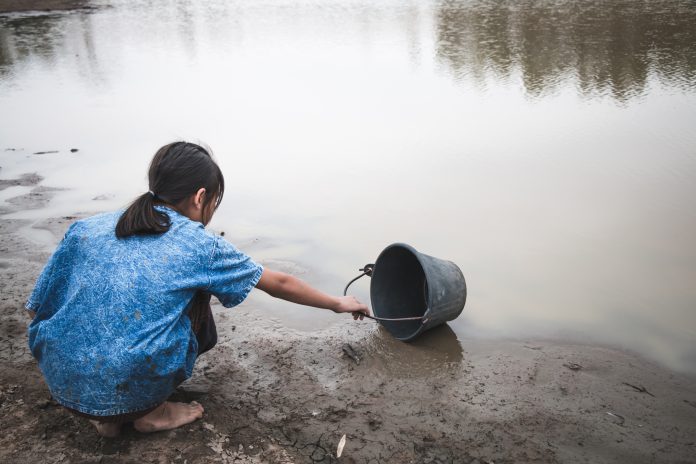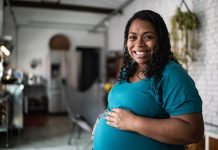When it comes to HIV risks for women, researchers found that natural disasters force vulnerable women to take any chance to secure resources – whether through transactional sex or engagement in early marriage
Currently, 80% of new HIV infections among adolescents are from girls – who are eight times as likely as boys to be living with HIV. The estimate from the same data is that 50 adolescent girls die everyday from AIDS-related illnesses.
50 adolescent girls die everyday from AIDS-related illnesses.
Intimate partner violence, inequitable laws and harmful traditional practices reinforce unequal power dynamics between men and women, with young women particularly disadvantaged.
Currently, the majority of people with HIV are from LMIC countries. In 2019, there were 20.7 million cases in Eastern and Southern Africa, 4.9 million in western and central Africa, 5.8 million in Asia and the Pacific, and 2.2 million in Western and Central Europe and North America. According to UNAIDS, in 2019, 81% of these people knew their HIV status, and a further 59% were prevented from passing on HIV to their children or to others via access to medication.
Dr Hans Kluge, WHO Regional Director for Europe, commented: “I remember when a diagnosis of HIV seemed like a death sentence. Now, with proper treatment, people with HIV can live without fear of AIDS.”
The aid-related abuse of women and girls
However, the HIV problem remains starkly present – especially for women, who are often forced to make difficult decisions. When natural disasters hit, there comes a very real threat of food insecurity in its wake. The fight to secure resources often involves sexual abuse.
The New Humanitarian investigated the power imbalance that exists in the delivering of aid. In the wake of the Ebola crisis, finding that 51 women came forward with multiple incidents of abuse between 2018 and 2020. In their article, they wrote that: “The women reporting abuse said most sexual encounters took place at hotels that doubled as hubs for UN and NGO offices. Among the favourite spots were the Okapi Palace hotel and Hotel Beni, where aid groups had offices and often booked blocks of rooms.”
They were abused by aid workers from the WHO, from the UN, from big NGOs
In the above case, women were asked to participate in transactional sex with the promise of a secure job – in a time where work was scarce, and opportunities so limited that food security was a big threat. They were abused by aid workers from the WHO, from the UN, from big NGOs who espouse the ideals of progressiveness publicly and witness this insidious behaviour happening in private.
The factors creating increased HIV risks for women
By 2025, 1,800 million people are expected to be living in countries or regions with insufficient water resources. According to the research in this study, when a crisis hits, women are typically the first to sacrifice their own food to ensure their children and others have enough to eat. Food insecurity directly leads to infection risks through nutrient deficiencies.
By 2025, 1,800 million people are expected to be living in countries or regions with insufficient water resources.
Additionally, food insecurity indirectly intensifies gendered inequalities that limit women’s access to healthcare, education, and improved autonomy – leaving women and girls more at risk of HIV, through a lack of decision-making power about their own bodies and the crucial knowledge to make those decisions.
“While many infectious diseases like HIV/AIDS do not have a direct link to the environment in their transmission patterns or vectors, disasters such as drought can still have a significant influence on the social conditions that shape and enhance vulnerabilities,” said the researchers, adding that hunger and food insecurity are key factors motivating women’s engagement in early marriage, commercial sex, transactional sex relationships, and other forms of risky sex engagements.
HIV activist Philip Baldwin, writing about the overlooked situation of women and HIV, said: “They often deal with the dual stigma of HIV and domestic violence. It is not hard to see how this can become a self-perpetuating cycle, layered with shame.”
Drought escalates food insecurity, which leads to self-sacrifice
Kelly Austin, associate professor of sociology at Lehigh University, explored how droughts shape gender inequalities in the HIV burden, with a focus on food insecurity.
Using a structural equation modelling approach, Austin and her team tested the indirect and direct links between food insecurity and HIV – alongside the chain of factors involving drought, food insecurity, and women’s HIV.
The results from the study found that drought escalates food insecurity, and food insecurity has indirect, negative impacts on women’s status, including lower participation in education, higher fertility rates and reduced access to medical care. The status of a woman and free use of contraceptives are tightly linked. Austin noted that “uncovering these mechanisms would not have been possible with more mainstream approaches.”
Their findings confirmed the link between social and climate pressures, the resultant availability food, and the gendered decision-making process that leads to the possibility of AIDS.
“Women in less-developed countries disproportionately bear the burden in terms of ill health when facing food insecurity or a shock or disaster like drought that impacts the ability to get food or harvest food,” said Austin.
“This information would be useful for policy makers and people working in international development and disaster response.”











